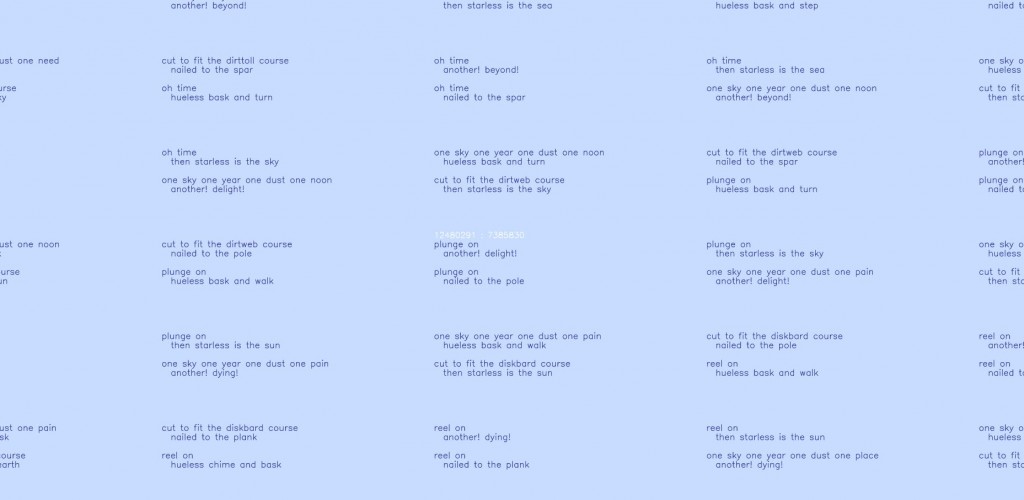TransPoetica, as a gallery exhibition, demonstrates the idea of “a synchronous communication in space … [which] involves gestures,visual signals, and a variety of voices” — otherwise known as a conversation (Obrist, 16). Each of Stephanie Strickland’s digital works that were displayed during this exhibit are unique and evocative of conversation in action. These are pieces of born-digital electronic literature, all of them heavily imbued with some sort of interactive and/or generative element that translates into an “embodied presence of speech” (Obrist, 16).
In particular, Sea and Spar Between, a generative poem of Herman Melville’s Moby-Dick, is a fantastic example of an ongoing conversation between the reader and the work in question. As the individual moves her mouse across the screen, random amalgamations of prose appear, filling up the display. This interaction is reminiscent of the gestural aspects of conducting a conversation — as the viewer moves, the work moves, adjusting to the changing atmosphere. In fact, the changing words represent an even more literal form of conversation, feeding the reader bits of information that they must then interrogate and communicate with synchronously.

A screenshot of Stephanie Strickland’s piece, Sea and Spar Between in action
Another wonderful example found in this exhibit, is the mobile version of V:Vniverse. This companion iPad application allows the user to perform a variety of interactive functions, including dragging and tapping their fingers across the screen in order to display a constellation of poems. This instantaneous feedback, again, relays back to the idea of “conversation” and how “it has to do with highs and lows, intervals, pauses, and silences” (Obrist, 16). There is an actual connection between the work and the reader — without the reader’s input, there would be no work.
In accordance with the ongoing theme of “conversation,” a launch party was coordinated on February 25, 2014 (TransPoetica). It marked the beginning of the gallery exhibition, as well as the start of new conversations. The visitors who came to the event, were able to meet with other members of the local community and discuss and explore the artist’s work together. Strickland was also present at this event, which allowed for more in-depth conversations pertaining to her creative activities.
In all, TransPoetica is a great example of interaction and dynamism fueled through and by conversation.
March 11, 2016 at 9:36 pm
I think that by using Sea and Spar Between as an example of a conversation helps to further emphasize the idea that TransPoetica is more than a single conversation. Each piece of literary art, whether print or digital, has unique interactions with individuals. I think this is part of what makes the exhibit valuable and meaningful. It is not just about looking at something or reading something. The literary and digital art provokes discussions pertaining to what art can be, what poetry can be, what it means to interact with art, how art can be digital, and even questions the future of fine and literary arts. I especially find interest in the different layers of conversation. There are the interchanges between viewer and art as well as the interchanges between the individuals that have experienced the art. People can begin to interact with the medium but also with each other in new and meaningful ways.